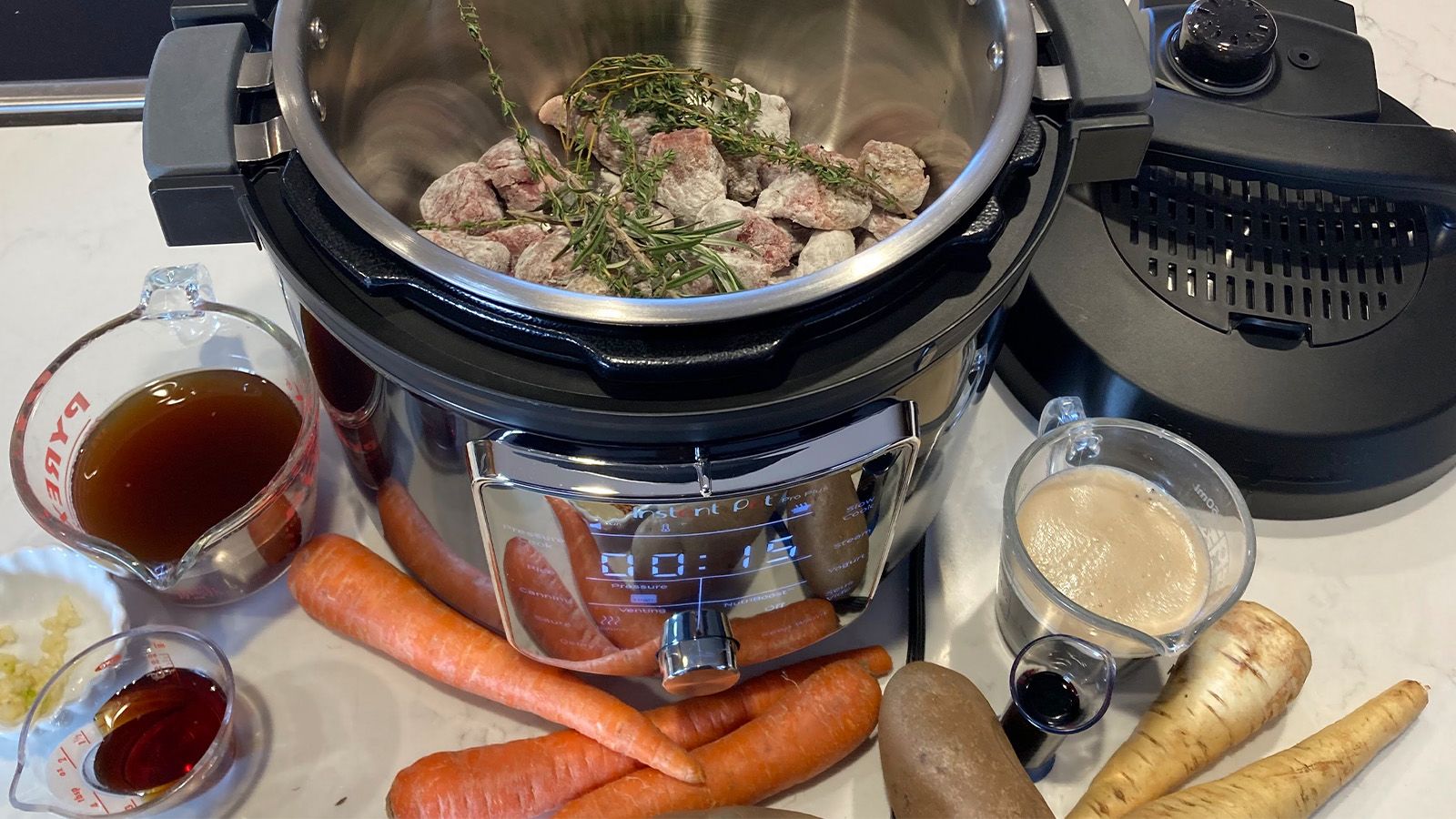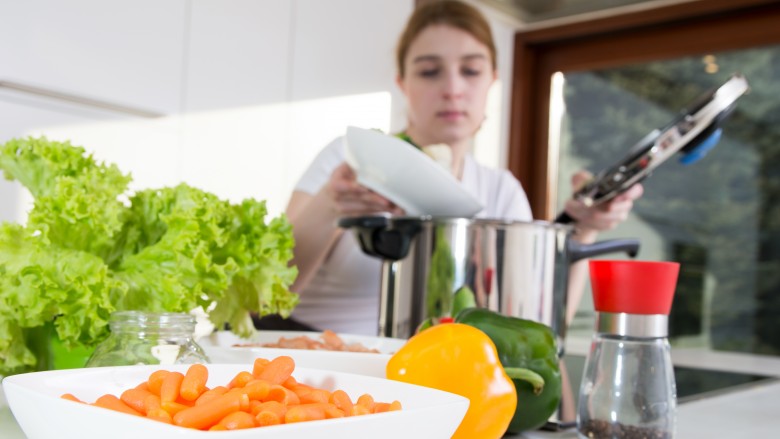Mastering the Art: How to Cook Stew in a Pressure Cooker
Written By James Morgan
Learning how to cook stew in a pressure cooker is an invaluable skill for any culinary enthusiast. As the days grow shorter and the weather cools, there's nothing more comforting than a warm, hearty stew. The pressure cooker, a marvel of modern kitchen technology, can transform tough cuts of meat and hearty vegetables into a tender and flavorful meal in a fraction of the time required by traditional methods.

What Makes the Pressure Cooker Unique?
Pressure cookers are renowned for their ability to reduce cooking times dramatically while preserving the flavors and nutrients of the ingredients. By cooking under high pressure, this handy kitchen gadget traps steam, creating a high-temperature environment that cooks food quickly and efficiently. Pressure cookers are perfect for making stews because they break down the fibers in meat, making it melt-in-your-mouth tender, while also infusing the vegetables and broth with a depth of flavor that's hard to achieve with other cooking methods.

Why Choose a Pressure Cooker for Stews?
Choosing a pressure cooker for your stews is not just about speed. It's about enhancing flavors and textures that traditional slow cooking methods may not achieve. Stews cooked in pressure cookers tend to have a richer taste because the sealed environment means that no flavors are lost during the cooking process. Whether you're preparing a beef stew, chicken stew, or a vegetarian alternative, the pressure cooker ensures that every bite is infused with deliciousness.
Ingredients Needed
Before we dive into the step-by-step process of cooking stew in a pressure cooker, let's gather all the necessary ingredients. Using fresh, high-quality ingredients is key to making a flavorful and healthy stew.
Ingredients:
- 2 pounds of beef, chicken, or a meat alternative
- 2 tablespoons of olive oil
- 1 large onion, chopped
- 4 cloves of garlic, minced
- 4 cups of beef or vegetable broth
- 2 large carrots, sliced
- 3 potatoes, diced
- 1 cup of green beans, trimmed and cut into 1-inch pieces
- 1 cup of peas
- 2 teaspoons of salt
- 1 teaspoon of black pepper
- 2 teaspoons of paprika
- 2 bay leaves
- 1 teaspoon of dried thyme
- 1/4 cup of tomato paste
Essential Tools & Their Importance
To make the process smoother, you will need some essential tools: a reliable pressure cooker, a sharp knife, and a sturdy cutting board. Using these tools will ensure that your ingredients are prepared efficiently and safely, paving the way for a seamless cooking experience.

Step-by-Step Guide on How to Cook Stew in a Pressure Cooker
Step 1: Prepare the Ingredients
Preparing your ingredients before you start cooking is essential for a stress-free cooking experience. Begin by rinsing and chopping all the vegetables. Use a sharp knife and a sturdy cutting board to ensure precision and safety. Cut your meat into bite-sized chunks, and season generously with salt, pepper, and paprika.
Step 2: Searing the Meat
Turn on your pressure cooker and select the 'Saut' function, allowing it to heat up before adding the meat. Searing the meat is a crucial step as it locks in the flavors and gives your stew a richer color and taste. Add two tablespoons of olive oil to the pressure cooker and then, working in batches, sear the meat until it's browned on all sides. Remove the meat and set it aside, but do not clean the pot.
Step 3: Sauting Onions and Garlic
In the same pot, add the chopped onions and cook until they become soft and translucent. This usually takes about 5 minutes. Add the minced garlic and cook for an additional 2 minutes. The aroma of the onions and garlic sauting together will start to fill your kitchen, setting the stage for your stew.
Step 4: Adding the Broth and Vegetables
Pour in the beef or vegetable broth to deglaze the pot, scraping up all the little bits stuck to the bottomthese bits are packed with flavor. Add the chopped carrots, potatoes, green beans, and peas to the pot. Stir in the tomato paste, thyme, and bay leaves, ensuring that everything is thoroughly combined.
Step 5: Pressure Cooking
Return the seared meat to the pot, stirring everything to combine well. Secure the lid on the pressure cooker and ensure the pressure valve is set to the 'Sealing' position. Select the 'Pressure Cook' or 'Manual' setting and adjust the cooking time to 35 minutes for beef or 25 minutes for chicken.
Step 6: Natural Release
Once the cooking cycle is complete, allow the pressure to release naturally for about 10 minutes before carefully turning the valve to 'Venting' to release any remaining pressure. This method of pressure release helps maintain the moisture and tenderness of the meat.
Step 7: Serving the Stew
Carefully remove the lid of the pressure cooker and give the stew a good stir. Remove the bay leaves before serving. Taste and adjust the seasoning if necessary. Serve your stew hot, garnished with fresh parsley or a dollop of sour cream for an extra touch of flavor.

Tips for the Perfect Stew Every Time
Choosing the Right Ingredients
The quality of your ingredients plays a crucial role in the outcome of your stew. Opt for fresh, organic vegetables, and high-quality meat. If you're making a vegetarian stew, consider using hearty root vegetables and legumes for added protein.
Proper Searing Techniques
Searing the meat properly adds depth of flavor and color to your stew. Ensure that your pressure cooker is hot before adding the meat. Avoid overcrowding the pot, as this will cause the meat to steam rather than sear.
Timing Matters
Cooking times can vary based on the size and type of meat you're using. While 35 minutes is ideal for beef, cuts like lamb may require a bit longer. Always refer to your pressure cooker's manual for precise cooking times.
Experiment with Seasonings
Don't be afraid to experiment with different herbs and spices. Adding a dash of Worcestershire sauce, soy sauce, or even a splash of wine can elevate the flavors. Fresh herbs like rosemary and thyme can also add a wonderful aroma and taste to your stew.
For more seasoning ideas, check out our guide on Herb Blends.
Cleaning and Maintaining Your Cookware
After enjoying your delicious stew, it's essential to clean and maintain your cookware properly. For cleaning your pressure cooker and other cookware, consider using a reliable cookware cleaner. To keep your cutting board in top condition, regular application of cutting board oil is recommended.
Discover more tips and recipes to make the most of your kitchen tools and ingredients in our Cooking Tips section.
Conclusion
Learning how to cook stew in a pressure cooker opens up a world of culinary possibilities. This method not only saves time but also elevates the flavors and textures of traditional stews. The convenience and efficiency of pressure cooking mean you can enjoy a hearty, nutritious meal even on your busiest days. Happy cooking!
As an Amazon Associate, I earn from qualifying purchases.



